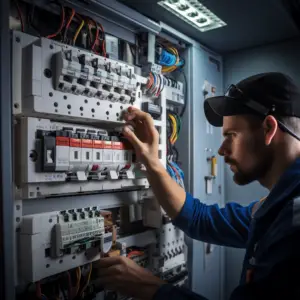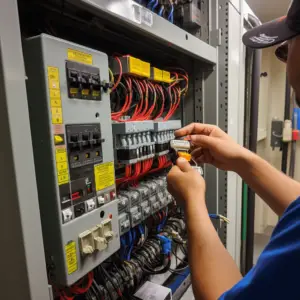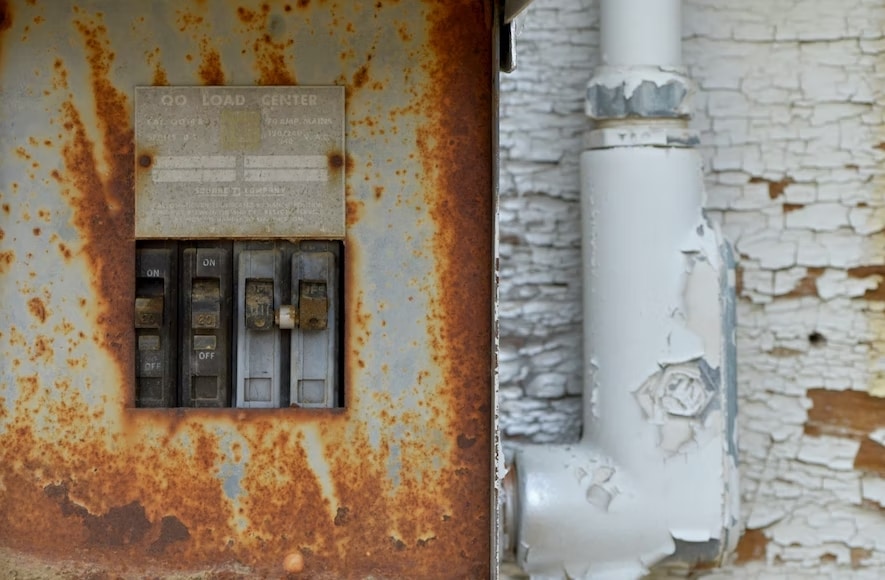Circuit breaker testing, breakers play a critical function in protecting people and your valuable equipment from electrical problems. Equipment, wires, and occasionally humans can suffer terrible harm when circuit breakers don’t work correctly.
The ability of a breaker to trip when something is wrong is the most crucial requirement, whether the issue is a shorted electrical line, a stuck motor, or someone inadvertently contacting an electrified component.
Table of Contents
How to Test if a Circuit Breaker Will Trip: The Steps to Take

But how can you test to confirm that your circuit breaker will trip if any of these happens?
To test if your circuit breaker will trip in case of an electrical fault, you can perform a circuit breaker trip test. This test can be thought of as operational or performance testing. It is carried out by faking an electrical problem and timing to see how long your circuit breaker will take to trip. If the breaker won’t trip, the wire will catch fire, the motor will burn out, or someone will likely be electrocuted and die.
Other Routine Tests Performed on a Circuit Breaker
Below are other routine tests performed on circuit breakers. Before performing any of them, ensure your equipment are disconnected.
Contact Resistance Test
After a prolonged operation, the internal contacts of the circuit breaker experience general wear and tear. Also possible are contact erosion and contamination.
The contact resistance test is crucial when assessing whether a circuit breaker is still in excellent working order.
Insulation Resistance Test
It is necessary to disconnect the load and line conductors before completing individual breaker insulation testing. If not, the connected circuit’s features will be included in the test values.
The effectiveness of the circuit breaker insulating material must be confirmed through insulation testing. Testing for insulating resistance often involves the use of a megger.
Applying too much voltage could cause damage to the insulation.
Connection Testing
Connection testing is done to make sure the proper electrical connection is available. The best connection testing method is an infrared thermography test done while the circuit breaker is on.
Circuit breaker overheating is prevented and minimized by properly built electrical connections.
What Causes a Circuit Breaker to Keep Tripping?
If your circuit breaker keeps on tripping, there is a reason behind it. Below are some of the reasons that can cause your circuit breaker to trip repeatedly:
Short Circuit
The most frequent problem that arises and causes a circuit breaker to trip is a short circuit. A short circuit might happen in a switch, outlet, or appliance when two wires meet.
Circuit Overload
Another common reason for a malfunctioning circuit breaker is an overloaded circuit. It occurs when a load exceeds the circuit or system’s capacity.
Also, when a circuit breaker becomes overloaded, it becomes the reason for repeated tripping. It can harm the wiring as well as the entire electrical system.
Ground Circuit
This issue is also known to cause a circuit breaker to trip repeatedly. It occurs when the box comes into contact with hot cables and bare ground.
You can experience a damaging outlet issue due to this ground circuit problem.
How to Test a Circuit Breaker that Keeps Tripping

Testing Using a Multimeter
Technicians must inspect a circuit breaker that continues tripping to diagnose the issue of a malfunctioning circuit breaker. Below are the steps on how to test a circuit breaker that keeps on tripping using a multimeter:
- You first need to turn off all the appliances that use the voltage from the circuit that keeps tripping to complete operations. Ensure all the devices are off and that nobody is directly or indirectly linked to the breaker.
- The circuit breaker must now be opened by removing the screws from the box where it is housed.
- Carefully remove each screw, then store them somewhere safe since you might need to reuse them to close the circuit breaker.
- You may now activate the multimeter to do the test.
- The multimeter’s probes should be connected.
- Ensure the black probe is attached to the port with “COMMON” inscribed. The red probe must be linked to the port with the “V” marked simultaneously.
- NOTE: Verify that a multimeter’s wires are not damaged.
- You should hold the red probe from the covered side. Next, use the screw on the left or right side of the circuit breaker to touch the probe’s meta side.
- Hold the black probe from the covered side and connect it with the neutral box as described previously.
- NOTE: The second screw must touch the black probe if you are testing a double pole breaker.
- Take note of the readings the multimeter has captured.
- Replace the circuit breaker immediately if you’ve spotted the reading 0; doing so will stop the breaker from tripping. If the circuit is a single pole and the multimeter displays a reading of roughly 120 Volts, there is no problem. On the other hand, the double pole circuit breaker is good if the values are between 220 and 250 volts.
Circuit Overload Test
With an overloaded circuit, appliances, such as televisions, computers, and other machines, might sustain harm from a circuit breaker that trips repeatedly. The problem typically arises after a circuit breaker has been in service for 40 years.
It is advised to replace the overloaded electric circuit breakers. Below are the steps on how to test for an overloaded circuit breaker:
- First, turn off all the appliances using the voltage from the breaker.
- Turn on the breaker
- Turn on the appliance and note when the circuit breaker trips
- The breaker must be replaced if it trips before you turn on your appliances.
Check Short Circuit
It is advised that you examine the electric circuit if you are having problems with your electric circuit and you have discovered a short circuit.
You can check the electric circuit by following the easy steps below:
- Switch off all the appliances that use the voltage from the breaker that keeps tripping.
- Switch on the circuit breaker.
- Turn on the appliance you have noticed trips the circuit breaker when turned on.
- If the circuit breaker trips, you need to have the appliance checked by a professional.
- If unsure which appliance is having issues, you may perform this test by turning each device on individually.


